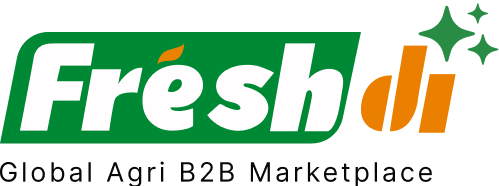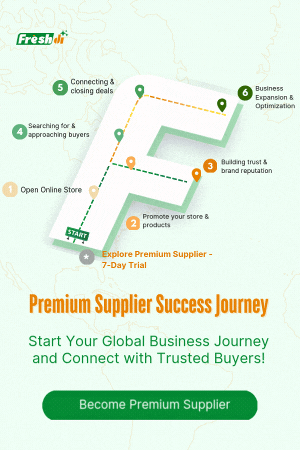Introduction – Switzerland’s Food Products Market in Statistical Focus
Switzerland may be famous for its mountains, watches, and chocolate, but quietly, it’s also a key player in the global food products market. From dairy and baked goods to organic produce and premium chocolates, Swiss food exports are known for their quality and precision—much like their timepieces.
In 2025, Switzerland maintained a solid presence in the global food trade, even amidst significant economic headwinds. The country’s food exports contribute billions to its economy annually. But in a landscape shaped by trade wars, shifting consumer preferences, and seasonal dynamics, businesses sourcing food products can’t rely on guesswork. It’s data that drives smart, strategic supplier decisions—and that’s where platforms like Freshdi step in, offering deep market insights and verified supplier data.
Deep Dive – Key Production, Export Statistics & Current Demand Data
Switzerland’s food sector is a blend of tradition and innovation. In 2025, exports of food products—especially dairy, baked goods, and specialty items—remained vital despite global hurdles. Key export destinations included Germany, France, the U.S., and the U.K. However, the winds shifted with global trade tensions, particularly affecting exports to the U.S., which declined over 22% in August 2025 alone due to new tariffs.
While these numbers might sound discouraging, they also reveal something important to buyers: the need for agility and verified supplier partnerships. According to RFQ (Request For Quote) trends on Freshdi, demand for Swiss food products continues to rise in Asia and the Middle East, offsetting some losses in Western markets. This shift is critical for companies looking to diversify their sourcing strategies.
Top 9 Verified Food Products Suppliers in Switzerland – Top Tier Based on Export Data
Let’s cut to the chase. These are the top-performing, export-verified suppliers in Switzerland for food products in 2025. Their rankings are based on export volumes, certifications, international reach, and buyer feedback gathered from Freshdi’s platform.
-
HUGGLER-WYSS HOLZBILDHAUEREI AG
Known for its premium specialty food products, this supplier combines traditional Swiss craftsmanship with modern production practices. -
H.U. HOFMANN AG
A powerhouse in processed foods and dairy exports, with a strong foothold in European and Asian markets. -
DELPHIN-AMAZONIA AG
Specializing in organic and sustainable food items, this supplier is a favorite among health-conscious importers. -
C.I.E.SA DANZI
Offers a wide range of high-quality food products, from dried goods to packaged foods, with consistent export performance. -
NIEDERHAUSER AG
A leading name in dairy and semi-hard cheese exports, highly rated for its product traceability and compliance. -
INNOTRADE AG
This company excels in food logistics and bulk exports, making it a reliable partner for large-scale buyers. -
MY FRIENDS AG
A newer name but rapidly climbing the charts thanks to innovative product lines and responsive customer service. -
ALFRED C. TOEPFER GMBH
Their vast export network and consistent quality make them a top choice for packaged and frozen foods. -
ZOOSANO AG
This supplier stands out for its unique product range and strong sustainability credentials.
Dynamic Ranking Note: Suppliers listed above represent top performers as of Q4 2025 based on export data and buyer reviews. Platforms like Freshdi regularly update these rankings with “Suppliers of the Month” and “Top Movers” based on real-time trade activity and RFQ engagement.
Market Navigation – Statistical Trends, Value Dynamics & Export Dynamics
Let’s talk numbers—and what they mean for your sourcing strategy.
Export and Demand Shocks in 2025
Swiss food exports took a hit this year, especially in the U.S. market, due to a harsh 39% tariff. This caused a 22.1% drop in exports to the United States, shrinking the value to 3.1 billion Swiss francs in August alone.
The dairy sector felt it hardest. Gruyère cheese, one of Switzerland’s signature exports, saw declining sales abroad. This led to a domestic glut, forcing producers to cull up to 25,000 cows to manage overproduction. Ouch.
Seasonal Price Fluctuations
Switzerland’s food prices dance to a seasonal rhythm. In September 2025, milk deliveries stayed high across Europe, but demand didn’t bounce back after summer. That meant lower prices for:
- Butter
- Semi-hard cheese
- Whole/skimmed milk powder
Interestingly, whey powder stayed stable, highlighting niche demand resilience. If you’re in the dairy business, timing your purchases with post-holiday lulls might just save you a fortune.
Domestic Demand to the Rescue
With exports under pressure, Swiss producers are betting big on local buyers and nearby markets. Domestic consumption and regional partnerships (especially with Germany and Austria) are helping stabilize the industry.
Platforms like Freshdi track these shifts in demand across regions, showing which products are trending and where gaps are emerging—vital for buyers navigating volatile markets.
Future Forecasts: What’s Next?
The Swiss economy is expected to grow by 1.5% in 2025—slightly below the 1.8% long-term average. The food products sector is expected to undergo a correction in early 2026, especially in dairy. Increased milk volumes could put more downward pressure on prices, particularly for mozzarella and butter.
Buyers take note: Q1 of 2026 may present bargain opportunities, particularly for importers looking to stock up on dairy at competitive rates.
Conclusion – Leveraging Data for Optimized Supply Chains
Switzerland’s reputation for quality in food production isn’t just hype—it’s backed by numbers, certifications, and strong supplier performance. But in 2025’s unpredictable trade climate, data is your best friend. Whether you’re a wholesaler, distributor, or retailer, choosing the right supplier can make or break your margins.
Using platforms like Freshdi, buyers can:
- Monitor RFQ trends to stay ahead of demand
- Evaluate supplier performance using real export data
- Access verified supplier certifications and compliance records
- Adapt quickly to seasonal pricing and global trade shifts
In short, Freshdi isn’t just a B2B platform—it’s your sourcing command center. When the market gets tough, smart buyers get smarter. And smarter starts with real-time data and trusted suppliers.
Key Takeaways
- Switzerland remains a top-tier exporter of food products, especially in dairy and packaged goods.
- Trade tensions and tariffs have reshaped export dynamics in 2025.
- Verified suppliers with strong performance data are essential to mitigate risk.
- Seasonal trends, like post-summer price drops, offer strategic buying opportunities.
- Platforms like Freshdi empower buyers with real-time market intelligence and supplier insights.
Checklist for Buyers – Sourcing Swiss Food Products in 2025
✅ Check supplier export certifications and compliance
✅ Monitor Freshdi’s RFQ trends to identify rising product demand
✅ Time your purchases with seasonal price lows (e.g., post-holidays)
✅ Diversify sourcing to avoid tariff-impacted markets
✅ Use Freshdi to shortlist top-performing, verified suppliers
Future Outlook – What 2026 Might Bring
Looking ahead, 2026 will likely be a year of correction and recalibration. Swiss food producers will continue focusing on efficiency, sustainability, and local demand. For global buyers, this means:
- More competitive pricing due to oversupply
- A shift towards premium and organic product lines
- Growing opportunities in emerging markets like Southeast Asia and the Middle East
Freshdi will be at the forefront, offering dynamic rankings, supplier updates, and market intelligence to guide you every step of the way.
FAQs
1. What is the most exported food product from Switzerland?
Dairy products—particularly cheese—remain Switzerland’s top food export, with Gruyère and Emmental leading the pack.
2. How do I verify a Swiss food supplier’s credentials?
You can use platforms like Freshdi, which list verified suppliers with export records, certifications, and buyer feedback.
3. Are Swiss food exports affected by tariffs in 2025?
Yes, especially in the U.S. market due to a 39% tariff, which significantly reduced export volumes.
4. When is the best time to buy Swiss dairy products?
Post-summer (September–October) typically sees price drops due to high supply and lower demand.
5. How does Freshdi help in sourcing food products?
Freshdi provides real-time RFQ trends, supplier verification, dynamic rankings, and market insights to help buyers make informed decisions.
Ready to source smarter? Explore verified Swiss suppliers and real-time food product trends now on Freshdi.


